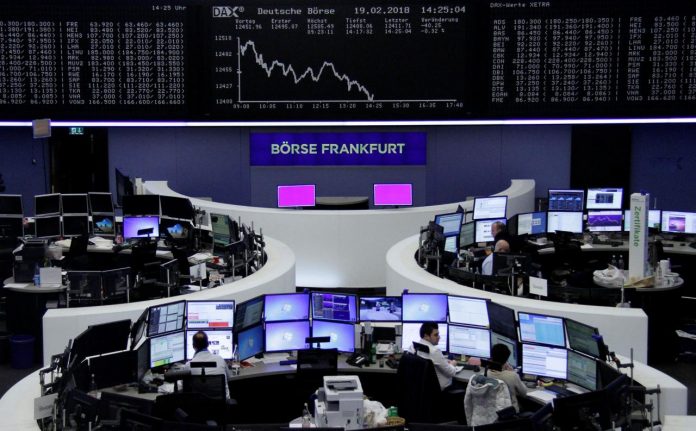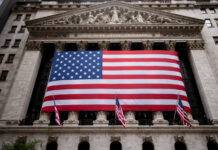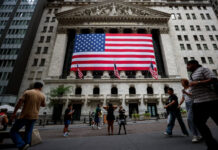
Global stocks break recovery streak with U.S. and China closed. World stocks were set to post their first loss in five days on Monday, breaking a winning streak that saw them recover almost half their losses from a violent sell-off two weeks ago.
In a day of relatively quiet trading owing to market holidays in the United States and China, losses in Europe weighed on stocks globally, which had earlier been propped up by gains in Japan.
European markets had opened positive, setting up the MSCI world index for its sixth day of gains but, by afternoon, the pan-European STOXX index had slipped over half a percent.
A poor update from Reckitt Benckiser hit the consumer staples sector, outweighing gains among financials and strength in steel makers after the U.S. outlined proposals for hefty import curbs.
Shares in Tenaris, Outokumpu and Arcelor Mittal – which have facilities in the United States – were the biggest gainers in Europe, up between 1 and 4 percent.
The MSCI world index, which tracks shares in 47 countries, was down 0.1 percent. The index has recovered nearly half what it lost between late January and last week’s low. The 4.3 percent gain it ultimately posted last week was its best weekly performance since December 2011.
INFLATION FEARS
January’s two-week rout, triggered by worries about a rise in U.S. inflation, had wiped more than $6 trillion off the value of global stock markets.
The sell-off took place despite global growth was helping to improve the corporate earnings outlook.
Just before the plunge, world shares were trading at 16.66 times expected earnings, the highest levels since 2004, according to Thomson Reuters Datastream. They are currently at 15.33 times.
“Investors knew market volatility would be low as the U.S. and Canada celebrate public holidays, and that weighed on enthusiasm in this part of the world,” said David Madden, markets analyst at CMC Markets. “Dealers decided to lock in their profits from week.”
Equity investors have drawn some reassurance from a fall in the VIX – a measure of implied volatility on the S&P 500 index, also known as Wall Street’s “fear gauge”.
The index has remained below 20 for three days, last reading at 19.46. It spiked to a 2-1/2-year high of 50.3 two weeks ago, a jump that caused massive losses among investors who had bet equity markets would stay stable on a combination of solid economic growth and moderate inflation.
Greek government bond yields dipped after a ratings upgrade from Fitch that highlighted improving sentiment towards the indebted southern European state. Italian bonds came under pressure from jitters ahead of next month’s election.
Bond yields across the euro zone were broadly higher in the absence of any fresh drivers.
The minutes of the Fed’s last policy meeting, held amid the equities tumble on Jan. 30-31, are due on Wednesday. Besides the outlook on rates, markets will be keen to see what, if anything, the Fed makes of the gyrations in markets.
DOLLAR EDGES UP
The dollar edged up from three-year lows against a basket of currencies.
The euro stood at $1.2396, backing down from Friday’s three-year high of $1.2556.
The dollar traded at 106.53 yen, bouncing back from its 15-month low of 105.545 set on Feb. 16.
The U.S. currency has been weighed down by various factors, including worries about widening U.S. trade and budget deficits and speculation that Washington might pursue a weak dollar strategy.
There is also talk that foreign central banks may be re-allocating their reserves out of the dollar.
Commodities, which enjoyed gains as the dollar weakened, were steady as it edged up.
Oil prices hit their highest level in nearly two weeks, lifted by the recovery in stocks and by tensions in the Middle East.
U.S. West Texas Intermediate crude rose 1.2 percent to $62.47 per barrel.
Brent crude rose over 1 percent to $65.63 per barrel.
Gold was flat.


















Thanks for sharing. Worth reading it
Nice share :.)